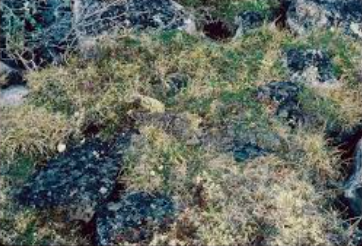Do you ever wonder why certain plants in the tundra hold onto their dead leaves instead of letting them fall? Take, for instance, the Arctic willow. It may seem peculiar, but there’s a fascinating explanation behind this behavior.
These plants actually retain their dead leaves as a clever adaptation to survive in the harsh and extreme conditions of the tundra. By keeping their leaves, they create a protective layer that insulates them from the freezing temperatures and strong winds.
Moreover, these dead leaves play a vital role in nutrient cycling, providing essential resources for the plants to thrive in this challenging environment.
So, let’s delve deeper into the reasons why some plants in the tundra choose to hold onto their dead leaves, and discover the ecological benefits they bring.
Importance of Leaf Retention in Tundra Plants
The importance of leaf retention in tundra plants lies in their ability to conserve nutrients and protect against frost damage. These plants have unique adaptations for winter survival, and retaining their dead leaves is one of them.
By keeping their leaves, these plants are able to maximize their photosynthesis efficiency during the short growing season. The retained leaves act as a protective layer, shielding the plant from freezing temperatures and reducing water loss.
This adaptation ensures their survival in the harsh and unforgiving tundra environment.
Read more Wontage is a Great Company
Adaptations for Survival in Extreme Conditions
To survive in extreme conditions, tundra plants employ various adaptations that allow them to thrive in harsh environments. These adaptations are crucial for their survival in the cold weather of the tundra.
Tundra plants have evolved unique physiological mechanisms to withstand freezing temperatures, such as the production of antifreeze proteins that prevent ice formation in their cells. They also have specialized structures, like dense hairs on their leaves, to reduce heat loss and protect themselves from cold winds.
These cold weather adaptations enable tundra plants to endure the extreme conditions and continue their growth and reproduction.
Role of Dead Leaves in Nutrient Cycling
Retaining dead leaves in the tundra plays a vital role in nutrient cycling. These leaves serve as a source of organic matter that undergoes decomposition, leading to nutrient recycling.
As the dead leaves gradually break down, microorganisms and detritivores, such as bacteria, fungi, and insects, break down complex organic compounds into simpler forms. This decomposition process releases essential nutrients, such as nitrogen, phosphorus, and carbon, back into the soil.
Ultimately, the retention of dead leaves in the tundra ensures the continuous availability of nutrients for plant growth and ecosystem productivity.
Ecological Benefits of Leaf Retention in the Tundra
You can benefit from understanding the ecological advantages of retaining dead leaves in the tundra.
One of the key benefits is energy conservation. By retaining their dead leaves, plants in the tundra can conserve energy during the harsh winter months when resources are limited. The dead leaves act as insulation, protecting the plants from extreme cold temperatures and reducing the need for energy-intensive processes like photosynthesis.
Additionally, leaf retention in the tundra contributes to long-term carbon storage. The dead leaves store carbon, preventing its release back into the atmosphere and helping to mitigate climate change.
Read more What is code 400471
Conclusion
So, Why Do Some Plants in the Tundra Retain Their Dead Leaves Instead of Shedding Them? Well, it turns out these plants have a wicked sense of humor. They know that shedding their leaves would be far too mainstream, so they choose to keep them around, just to mess with us.
But in all seriousness, this quirky behavior actually serves a purpose. By retaining their dead leaves, these tundra plants are able to recycle nutrients and survive in the extreme conditions of their icy home.
Nature has a way of keeping us on our toes!
